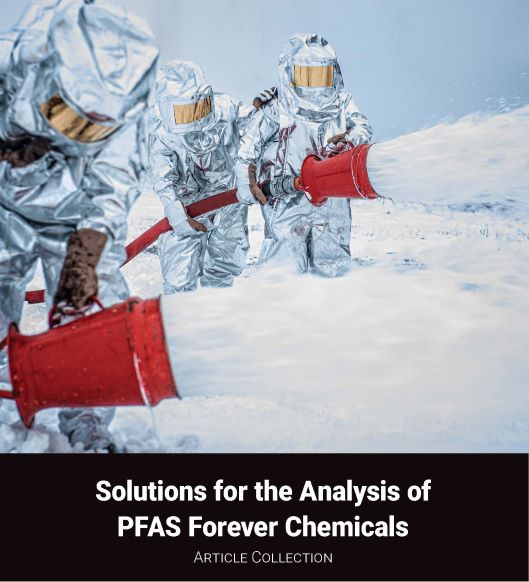PFAS are a group of persistent manmade organic chemicals used in many products that accumulate in the environment, potentially causing harm to humans and wildlife. Ongoing research aims to understand their effects on ecosystems as well as to detect them in the environment and develop effective remediation measures.
This article collection focuses on the performance of US Environmental Protection Agency methods for PFAS analysis and the impacts of PFAS on certain species.
Register to download this free article collection and access research articles and solutions provided by Agilent
- An Interlaboratory Study on EPA Methods 537.1 and 533 for Per- and Polyfluoroalkyl Substance Analyses. By J. S. Whitaker, R. B. Hrabak, M. Ramos, C.Neslund, and Y. Li. AWWA Water Science
- Correlations between Per- and Polyfluoroalkyl Substances and Body Morphometrics in Fledgling Shearwaters Impacted by Plastic Consumption from a Remote Pacific Island. By D. Szabo, J. L. Lavers, J. Shimeta, M. P. Green, R. A. Mulder, and B. O. Clarke. Environmental Toxicology and Chemistry
- Perfluorinated Alkyl Acids in Plasma of American Alligators (Alligator mississippiensis) from Florida and South Carolina. By J. T. Bangma, J. A. Bowden, A. M. Brunell, I. Christie, B. Finnell, Matthew P. Guillette, M. Jones, R. H. Lowers, T. R. Rainwater, J. L. Reiner, P. M. Wilkinson, and L. J. Guillette Jr. Environmental Toxicology and Chemistry
- Determinants of Legacy Persistent Organic Pollutant Levels in the European Pond Turtle (Emys orbicularis) in the Camargue Wetland, France. By L. Burkart, A. Olivier, O. Lourdais, M. Vittecoq, G. Blouin‐Demers, F. Alliot, C. Le Gac, N. Martin, and A. Gouttea. Environmental Toxicology and Chemistry


